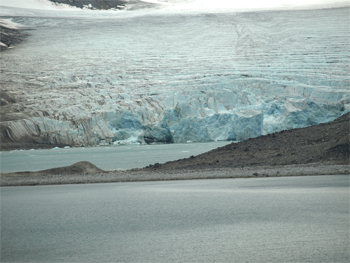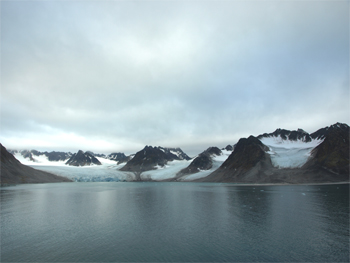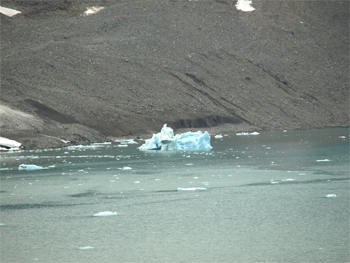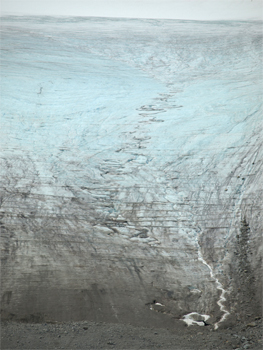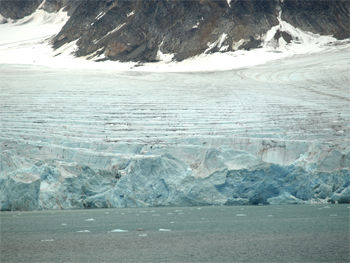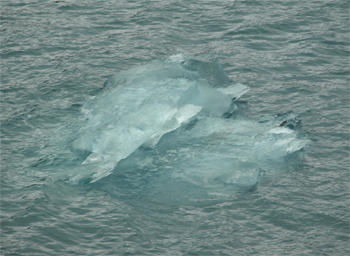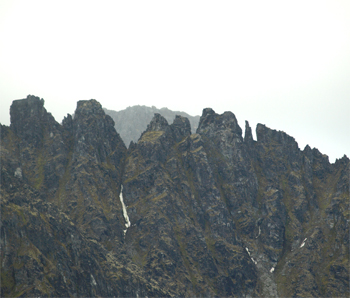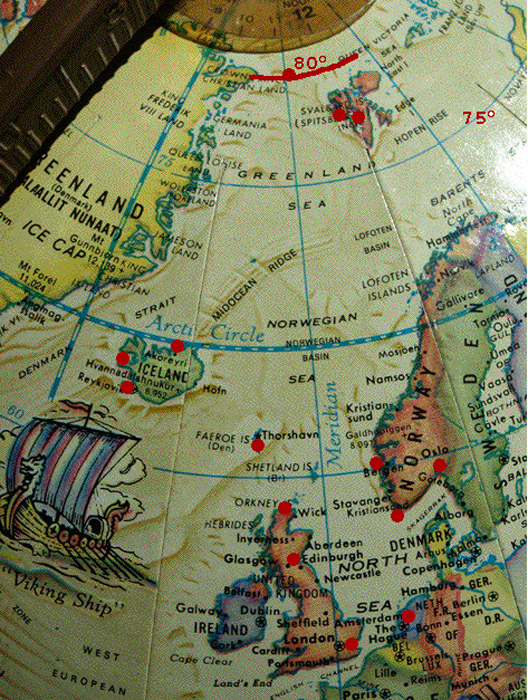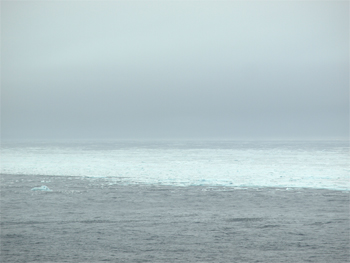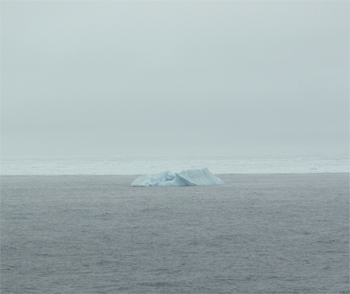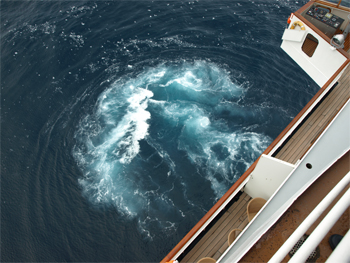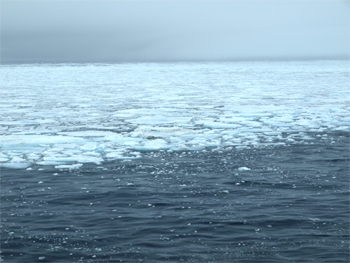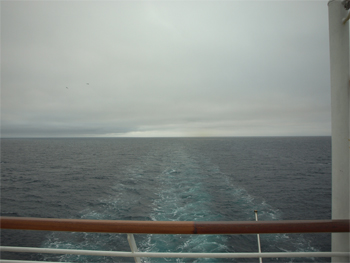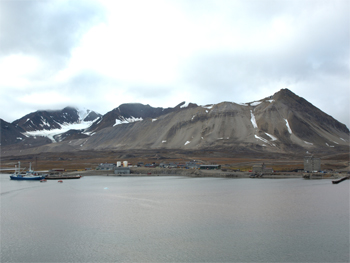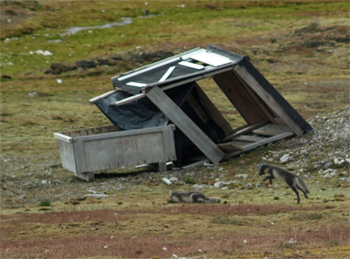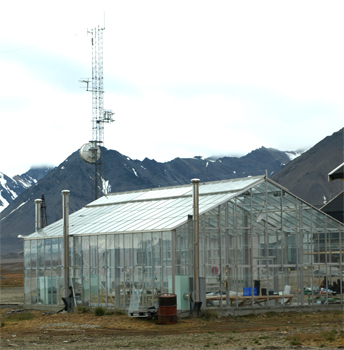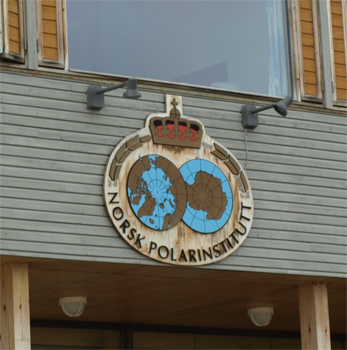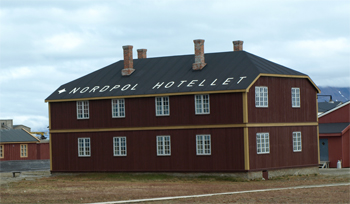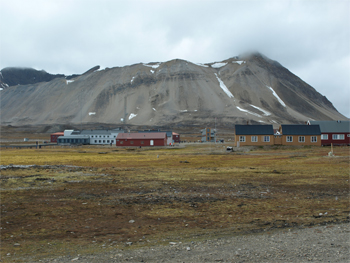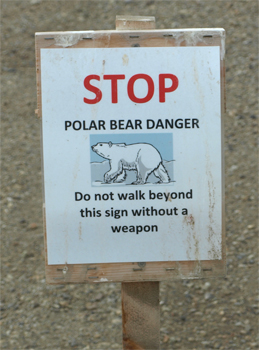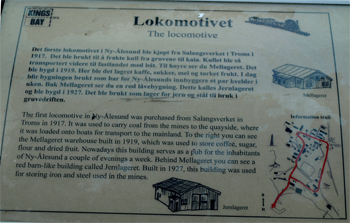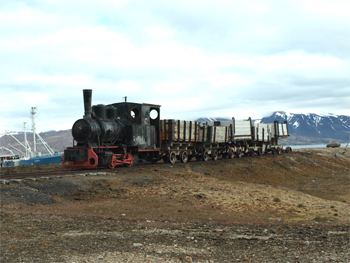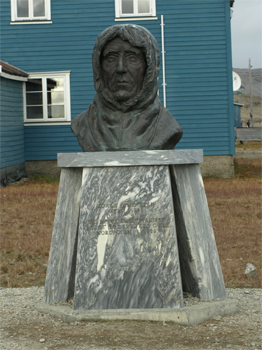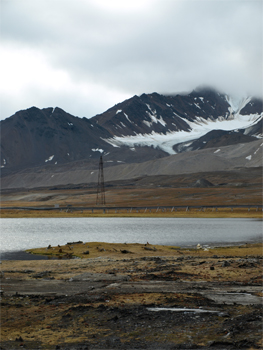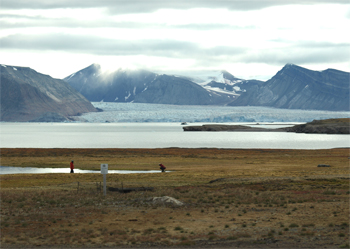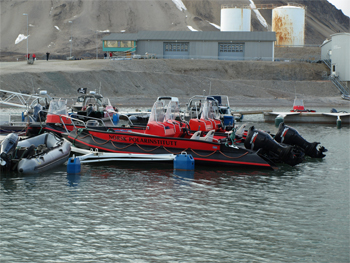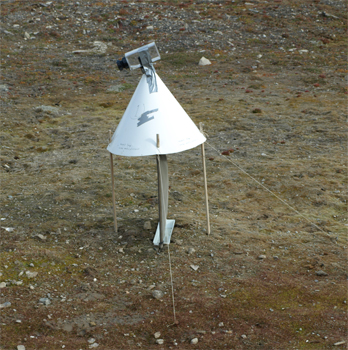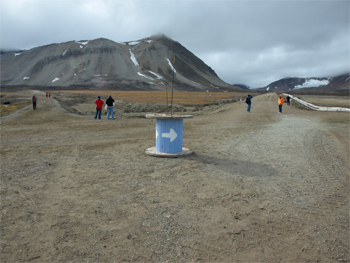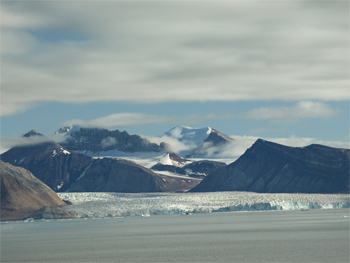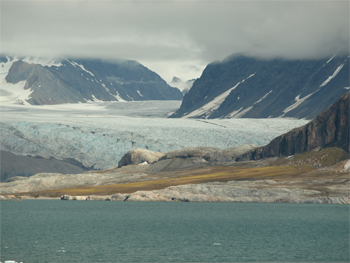Thurs., 8/5/10 - At Sea in the Magdalenefjorden and Polar Ice Pack!
The weather was bright and clear, but not sunny, so our captain sailed into Magdalenefjorden at 5 AM. He went in to about one mile from the large terminal glacier at the end of the fjord and stayed there for about two hours. We were up on deck from 6 to 8 AM. Our ship lecturer, Frank Buckingham, gave a running commentary on glaciers and ice and moraine formations. We heard about aretes (saw-toothed ridges), nunataks (exposed rocky elements on a ridge – points sticking up), ice caps, ice bowls and cirques, moraines (terminal, lateral, and medial), icebergs, growlers (ice floating up to 3 ft out of the water), bergy bits (small icebergs 3 to15 ft out of the water), and brash (accumulations of floating ice). We saw no calving from the three terminal glaciers of the 15 or so that are in this fjord. It was cold up on deck 13 but well worth the view and we had several layers on to keep us warm. Of special interest was a Polish expedition camp on the north shore set up with four tents, a zodiac boat, and lots of scientific instruments.
One lecture today by the on board geologist, Denis St-Onge, explained more about glaciers and land formations but also a little about how warm surface ocean currents, including the Gulf Stream, come up to this area (the polar North and the Arctic Oceans) and then cool and submerge to form the deep cold ocean currents that circumnavigate our globe. Therefore, many countries are studying global warming and related topics in Svalbard and even in Iceland. Another phenomenon to be measured here is that the ice packs (north and south) reflect the sun's heat and the dark ice-free ocean absorbs the heat. As the ice caps shrink, the world climactic temperature increases. Another topic of research concerns the ocean's ability to consume CO2. The ocean is not breaking down the CO2 as fast as the world is creating it.
Tonight at 11 PM the Indonesian crew put on their show for our entertainment. There were two soloists, their version of the traditional monkey dance, the hand-slap dance, and the bamboo orchestra. They had fun and were rather good.
Fri., 8/6/10 - Ny Alesund, Svalbard, Norway
This morning we rode tenders to the dock at Ny Alesund, the northernmost settlement in the world at nearly 79° north latitude. The banks of the Kongsfjorden were first used as an over-winter whaling station, then for mining coal and currently it is an important center of international and multidisciplinary Arctic environmental research. There are about 30 permanent residents and up to 200 researchers at various times. China, France, Germany, Italy, Norway, Japan, Britain, USA, and South Korea have research bases here. Research takes place in geology, zoology, botany, glaciology, and atmospheric conditions.
We walked the approved "trail" (gravel roads) around the town and saw the northernmost post office, airfield (landing strip - a small plane came in and departed while we were ashore), a statue of Amundsen, and the tether pole for his zeppelin, a museum, gift and snack store, sled dog kennels with seal meat hanging to dry and used to feed the dogs, bird sanctuary with Arctic terns and sandpipers, many dormitories, houses and laboratories including two research ships, lots of zodiacs and the atmospheric center up on "Zeppelin Hill" reached by cable car - the Graf Zeppelin was here in 1910. Some of the old mining buildings and conveyors are left as preserved ruins.
The highlight of the walk was watching two Arctic foxes playing 30 yards away from our trail. They had their summer fur and were not white.
Approaching Ny Alesund |
Post office
|
Communications are essential |
Playful arctic foxes
|
Glassed in lab
|
|
Local hotel |
Tundra, housing, and mountains
|
A serious sign
|
Drying seal meat for the dog sled teams |
|
The old mine locomotive and four coal cars stands as a reminder of the mining days.
|
Roald Amundsen, the Norwegian explorer, unsuccessfully tried to reach the North Pole from here. He was, however, the first person to fly over the north pole in a dirigible.
|
Pole in distance is Amundsen's dirigible tether |
Glacier at the head of the fjord
|
Ny Alesund harbor |
Zodiacs used by researchers
|
Research vessel |
Daily passenger plane arriving |
An insect research project
|
Round-about Ny Alesund style
|
Glacier across the fjord |
|
The small museum had several video displays showing the local flowers and fauna, the variety of research conducted at this base, the climactic changes in Ny Alesund, and the international effort in the research. This port-of -call was most unique.
|
Today was a lazy day. I took the "kitchen tour" in the morning and saw where our dinners are assembled. The main kitchen and bakery, etc. is on deck 4 and food is sent up by dumb waiter to the 7th deck where the garnishes are added. We also toured the "elegant" Pinnacle dinning room, which uses fine china and stemware and the meals are prepared by a separate master chef. The service and experience is pricey.
Dinner was another formal affair and we ate with couples from The Hague, Netherlands and Perth, Australia. It is nice that we have traveled enough to be able to talk about common places. We skipped the show and went to bed even though the sun never set again.
Nothing much doing today. We listened to the lecture on our last two ports of call, Kiristiansand and Oslo. It was our turn for a special lunch for those of us who have sailed with Holland America for more than 50 days - the Mariner Club. It was a nice affair with free wine.
We went up to the Lido Buffet at 10:30 for the chocolate dessert extravaganza. Of course it was a mob scene but we got some of the elaborately decorated chocolates and enjoyed them all. My favorites were the fruit skewers dipped in chocolate fondue and a chocolate covered biscuit (cookie) with coconut topping. The crew had it well organized. From 10:30 to 11:00 a single line walked through the buffet area to look and take pictures. Then the line was given plates and the goodies were cut into.
| Return to Top | Return to Itinerary | Return to Dreamcatcher Home Page |
